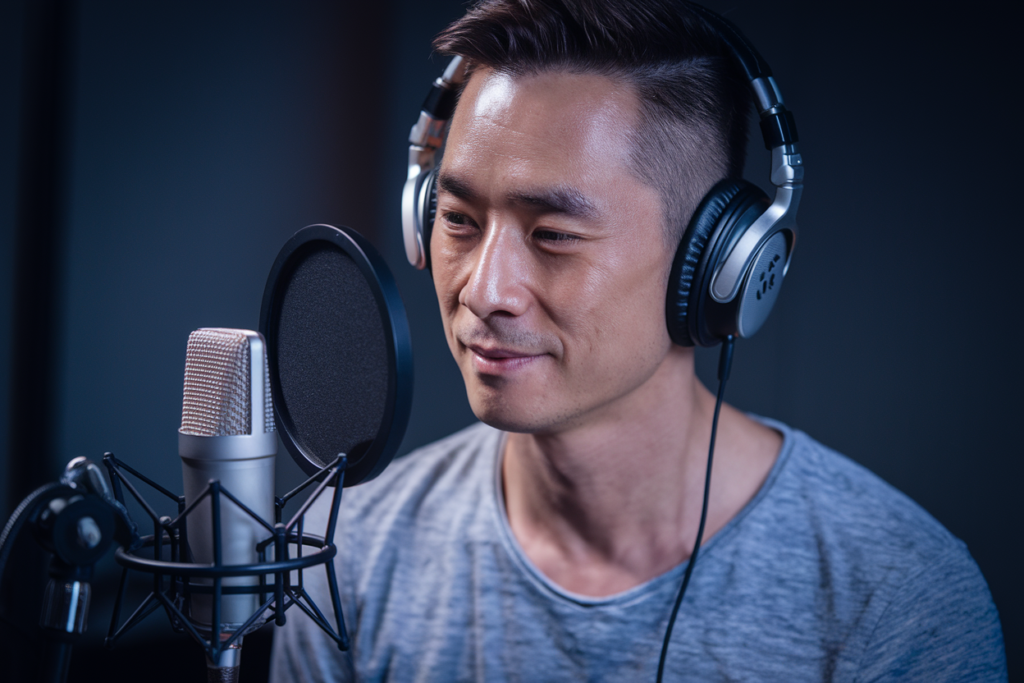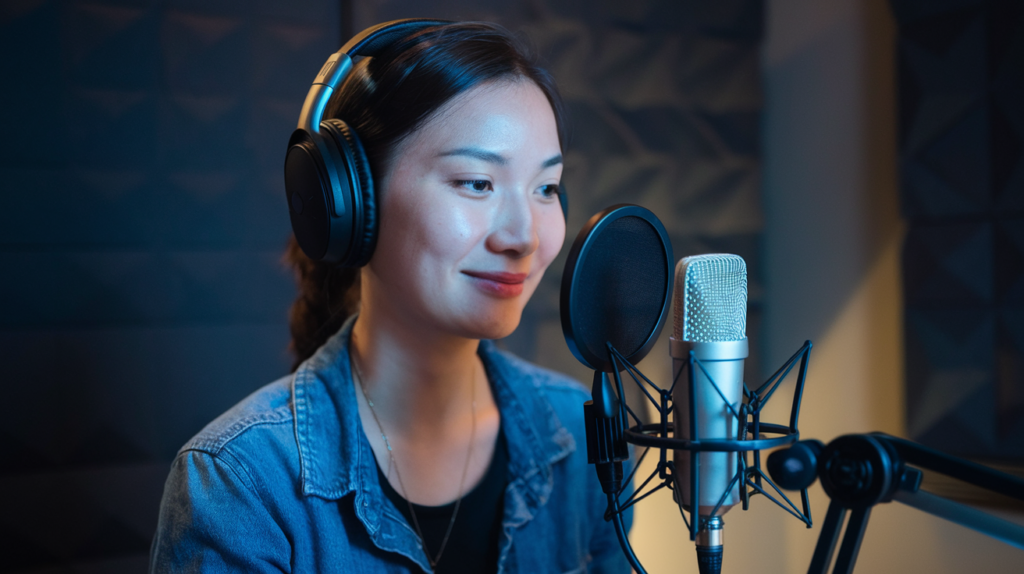Key Takeaways
- Importance of Lip Sync: Effective lip sync techniques are crucial for creating natural and immersive Chinese dubbing, enhancing viewer engagement and emotional connection to the story.
- Script Adaptation: Adapting scripts thoughtfully—considering rhythm, flow, and cultural nuances—is vital for aligning dialogue with mouth movements and ensuring authenticity in performances.
- Voice Actor Training: Continuous training and practice are essential for voice actors to master timing, delivery, and pitch adjustments necessary for seamless integration with visual cues.
- Technological Advancements: Utilizing advanced audio editing tools enables precise synchronization of dialogue with visuals, improving overall production quality in dubbing projects.
- Cultural Sensitivity: Understanding local idioms and expressions enhances the authenticity of voiceovers; ignoring these elements can lead to disconnection from audiences.
- Collaboration is Key: Effective communication among directors, sound engineers, and voice actors is essential for refining performances and achieving high-quality results in dubbing.
Ever wondered why some Chinese dubbing feels so much more natural than others? The secret often lies in effective lip sync techniques. When done right, they can transform a good dubbing job into a captivating experience that resonates with viewers.
Overview of Chinese Dubbing
Chinese dubbing plays a crucial role in making international content accessible to Mandarin-speaking audiences. This process involves matching voiceovers with visuals, ensuring that the dialogue flows smoothly and maintains emotional resonance. When done correctly, it creates an immersive experience for viewers.
The art of dubbing requires skilled voice actors who can bring characters to life through their performances. They need to capture not only the words but also the tone, emotion, and timing present in the original language. Effective lip sync techniques enhance this aspect by aligning the spoken words with mouth movements on screen.
In recent years, advancements in technology have improved dubbing quality significantly. Tools like audio editing software allow for precise adjustments in timing and pitch, resulting in a more natural sound. Voice artists leverage these tools to create engaging performances that resonate with audiences.
Cultural nuances also play a vital role in Chinese dubbing. Understanding local idioms and expressions helps voice talent deliver lines authentically. By adapting scripts thoughtfully, they ensure that humor or sentiment translates effectively across cultures.
Professionalism is key within this industry. Voice over talents often undergo rigorous training to hone their skills and develop unique styles that appeal to various projects. Collaboration among directors, sound engineers, and voice actors ensures every detail aligns perfectly, enhancing the overall production quality.
Ultimately, successful Chinese dubbing hinges on a combination of technical skill and artistic expression. It’s about creating an experience where viewers feel connected to the story being told—regardless of its origin.
Common Challenges in Lip Sync
Lip sync is a critical aspect of Chinese dubbing, yet it presents several challenges. Addressing these issues ensures more seamless and engaging voiceovers.
Timing and Rhythm
Timing and rhythm play a vital role in achieving effective lip sync. You must align the delivery of lines with the characters’ mouth movements to create authenticity. Misalignment can lead to awkward moments that disrupt viewer immersion. Voice actors often face difficulties when original dialogue doesn’t match the pacing of Mandarin speech patterns. Adjustments may involve modifying script lengths or choosing different inflections to maintain natural flow. Successful synchronization requires careful attention to beat placement, ensuring emotional highs and lows resonate with visual cues.
Cultural Nuances
Cultural nuances significantly impact lip sync accuracy, as they shape how dialogue resonates with audiences. Understanding local idioms, expressions, and humor is essential for voice talent delivering authentic performances. If you overlook cultural context, even well-timed voiceovers may feel out of place or fail to capture intended emotions. Voice artists must adapt scripts thoughtfully while retaining their essence—this may involve rephrasing lines for clarity or impact within a specific cultural framework. Embracing these subtleties leads to richer storytelling experiences that connect deeply with viewers.
Techniques for Better Lip Sync in Chinese Dubbing
Effective lip sync techniques are vital in Chinese dubbing, ensuring a seamless connection between the dialogue and visuals. These methods enhance viewer engagement by making performances feel authentic and relatable.
Script Adaptation Methods
Adapting scripts for lip sync involves more than just translation. You need to consider the rhythm and flow of Mandarin speech, which can differ significantly from the original language. One technique is to shorten or lengthen lines to match mouth movements better. For instance, if a character’s lips move quickly, you might condense phrases while retaining their meaning. This approach maintains authenticity without sacrificing clarity.
Another method includes using culturally relevant expressions that resonate with local audiences. When voice actors deliver lines that reflect familiar idioms or humor, it creates a stronger emotional connection with viewers. Adapting scripts thoughtfully leads to richer storytelling experiences that captivate your audience.
Voice Actor Training Strategies
Voice actor training plays a crucial role in achieving effective lip sync. Actors must master timing and delivery to align their performance with on-screen characters’ actions seamlessly. Engaging in regular practice sessions helps improve their ability to adjust pitch and tone according to specific scenes.
Participating in workshops focused on dubbing techniques can also be beneficial. These sessions often include exercises that emphasize matching vocal patterns with visual cues, enhancing overall performance quality. Additionally, feedback from directors during rehearsals proves invaluable as it guides voice talent toward refining their craft for optimal results.
Technological Tools and Software
Utilizing advanced technological tools is essential for achieving superior lip sync in Chinese dubbing projects. Audio editing software allows precise timing adjustments and pitch modifications, resulting in natural-sounding dialogue that aligns perfectly with visuals.
Many professionals leverage specialized programs designed specifically for dubbing purposes. These tools enable voice artists to visualize audio waveforms alongside video tracks, helping them synchronize performances effectively. Embracing technology not only streamlines the process but also elevates production quality significantly.
Incorporating these techniques into your projects enhances overall effectiveness while creating an immersive experience for your audience through captivating dubbed content.
Case Studies
Examining successful and failed dubbing examples provides valuable insights into effective lip sync techniques in Chinese dubbing.
Successful Dubbing Examples
Analyzing standout cases reveals how precise voice talent can elevate a project. One notable example involved a popular animated series where the voice actors expertly adapted their delivery to match the characters’ mouth movements. By condensing phrases and choosing culturally relevant expressions, they maintained the original emotion while ensuring seamless synchronization with visuals. The final product resonated deeply with audiences, showcasing how attention to detail in timing can create an immersive experience.
Another example comes from a live-action film that utilized skilled voice artists who understood the nuances of Mandarin speech patterns. These voice actors adjusted their performances based on character emotions, successfully aligning dialogue with visual cues. Their collaborative efforts with sound engineers ensured that pitch adjustments complemented the flow of conversation, resulting in a captivating viewing experience.
Analysis of Failed Dubbing Attempts
Conversely, examining failed attempts highlights pitfalls to avoid in dubbing projects. A notable case featured a foreign film where mismatched dialogue led to disconnection for viewers. The voice over talent struggled to sync their lines with fast-paced action sequences due to rigid script adherence without consideration for Mandarin’s natural rhythm. This lack of flexibility resulted in awkward pauses and unnatural deliveries that detracted from the storytelling.
In another instance, cultural misunderstandings plagued a dubbed series when local idioms were overlooked during translation. As a result, humor didn’t translate effectively; viewers found themselves confused rather than entertained. This showcases how essential it is for voice over talents to adapt scripts thoughtfully while preserving core messages.
These analyses underscore crucial lessons: successful lip syncing requires skillful adaptation and an understanding of both language and culture while avoiding common missteps ensures greater audience engagement and satisfaction in Chinese dubbing projects.
Future Trends in Chinese Dubbing
Chinese dubbing continues to evolve, driven by technological advancements and changing audience preferences. The integration of artificial intelligence (AI) tools is reshaping how voice actors approach their craft. AI can analyze speech patterns and suggest adjustments for more accurate lip sync, enhancing the overall quality of voiceovers.
Real-time voice modulation software emerges as another trend, allowing voice artists to adjust pitch and tone while recording. This innovation leads to a more dynamic performance that aligns closely with character emotions and actions. As you consider projects, think about how these technologies could streamline production processes while elevating your content’s impact.
Cultural sensitivity remains paramount in dubbing efforts. Globalization means audiences crave authentic experiences that resonate on a local level. Voice talent must remain attuned to cultural nuances, ensuring scripts reflect local idioms and humor effectively. Engaging with skilled voice actors who understand these subtleties makes a significant difference in viewer reception.
Collaboration between directors and sound engineers also plays an essential role in future trends. By fostering open communication during production, teams can create richer storytelling experiences that captivate audiences. Voice artists thrive when they receive constructive feedback throughout the process, leading to performances that are both polished and emotionally engaging.
As viewers increasingly seek diverse content from around the world, the demand for high-quality Chinese dubbing rises accordingly. Investing in talented voice over professionals ensures your projects stand out in this competitive landscape while connecting meaningfully with Mandarin-speaking audiences.
Embracing these trends positions you advantageously within the industry, setting up future successes through thoughtful project execution and collaboration with top-notch voice over talent.
Conclusion
Mastering lip sync in Chinese dubbing isn’t just about matching words to visuals. It’s about creating a genuine connection with the audience through nuanced performances that resonate emotionally. By focusing on rhythm flow and cultural relevance you can significantly enhance the quality of your dubbing work.
Embracing technological advancements will further refine your craft allowing for precise adjustments that elevate viewer engagement. Continuous training collaboration with skilled professionals and thoughtful script adaptations are essential for achieving seamless performances.
As you navigate this evolving landscape keep honing your techniques and understanding cultural nuances to stand out in the competitive world of Chinese dubbing. With dedication your efforts can lead to captivating experiences that bring stories to life for Mandarin-speaking audiences.
Frequently Asked Questions
What is the significance of lip sync techniques in Chinese dubbing?
Lip sync techniques are essential in Chinese dubbing as they enhance the naturalness and overall quality of voiceovers. Properly executed, these techniques create a captivating experience for viewers by aligning dialogue with characters’ mouth movements, ensuring emotional resonance and smooth flow.
How does Chinese dubbing make international content accessible?
Chinese dubbing makes international content accessible to Mandarin-speaking audiences by providing voiceovers that match the visuals. This process ensures that dialogue flows naturally, allowing viewers to connect with stories without language barriers while maintaining cultural relevance.
Why are skilled voice actors crucial in dubbing?
Skilled voice actors are vital because they must capture not only the words but also the tone, emotion, and timing of the original dialogue. Their performance greatly impacts how well the dubbed content resonates with viewers and enhances storytelling.
What role does technology play in improving dubbing quality?
Recent advancements in audio editing software have significantly improved dubbing quality. These tools allow for precise adjustments in timing and pitch, resulting in more natural-sounding performances that align closely with on-screen actions.
What challenges do voice actors face when achieving effective lip sync?
Voice actors often face challenges such as mismatched speech patterns between languages. They need to align their delivery with characters’ mouth movements while adapting scripts to ensure a natural flow, which can be complicated by cultural nuances.
How important is script adaptation for better lip sync?
Script adaptation is crucial for enhancing lip sync accuracy. By adjusting phrases to match Mandarin speech rhythm and incorporating culturally relevant expressions, voice talent can improve audience engagement and create a more immersive experience.
What training do voice actors undergo for successful dubbing?
Voice actors typically engage in rigorous training that focuses on mastering timing, delivery, and emotional expression. Regular practice and participation in workshops help refine their skills necessary for seamless performance alignment during dubbing projects.
How do future trends impact Chinese dubbing practices?
Future trends like AI integration are reshaping Chinese dubbing by analyzing speech patterns for better lip sync suggestions. Additionally, real-time voice modulation software allows artists to adjust performance elements during recording sessions for dynamic results.
Why is cultural sensitivity important in Chinese dubbing?
Cultural sensitivity is paramount as it helps ensure that adaptations resonate authentically with local audiences. Understanding idioms, humor, and cultural references leads to richer storytelling experiences that engage viewers effectively across different cultures.
What should creators focus on to succeed in Chinese dubbing?
Creators should invest time into collaborating closely with skilled voice-over professionals while embracing technological advancements. Prioritizing high-quality production values combined with thoughtful project execution will set them apart within an increasingly competitive landscape.







